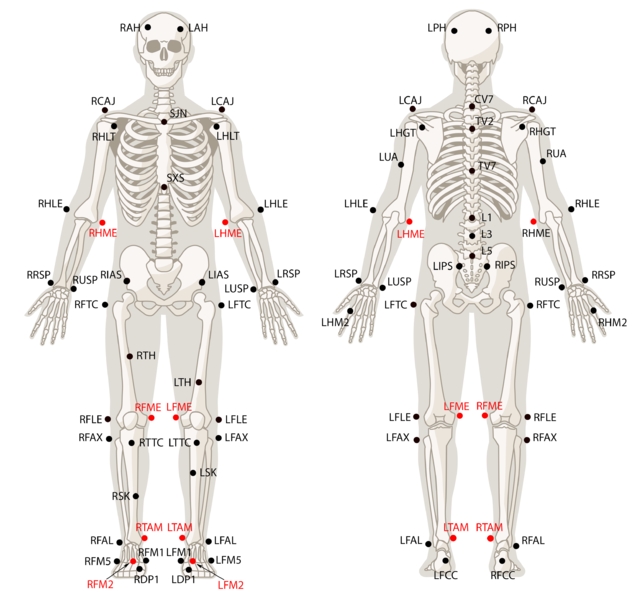Biomechanics Marker Sets
In a Motive Body license, there are a number of Skeleton Marker Set templates for biomechanics tracking applications. When attaching the markers, reference the Skeleton avatar from the Builder pane for relative locations. Then refer to the corresponding Marker Set pages, or related reference materials, for additional descriptions on where each marker must be placed on the subject.

Biomechanics Marker Sets**:**
Helen Hayes Lower Body
Rizzoli Lower Feet (44)
Conventional Full Body (39)
Conventional Upper Body (27)
Conventional Lower Body (16)
Was this helpful?

